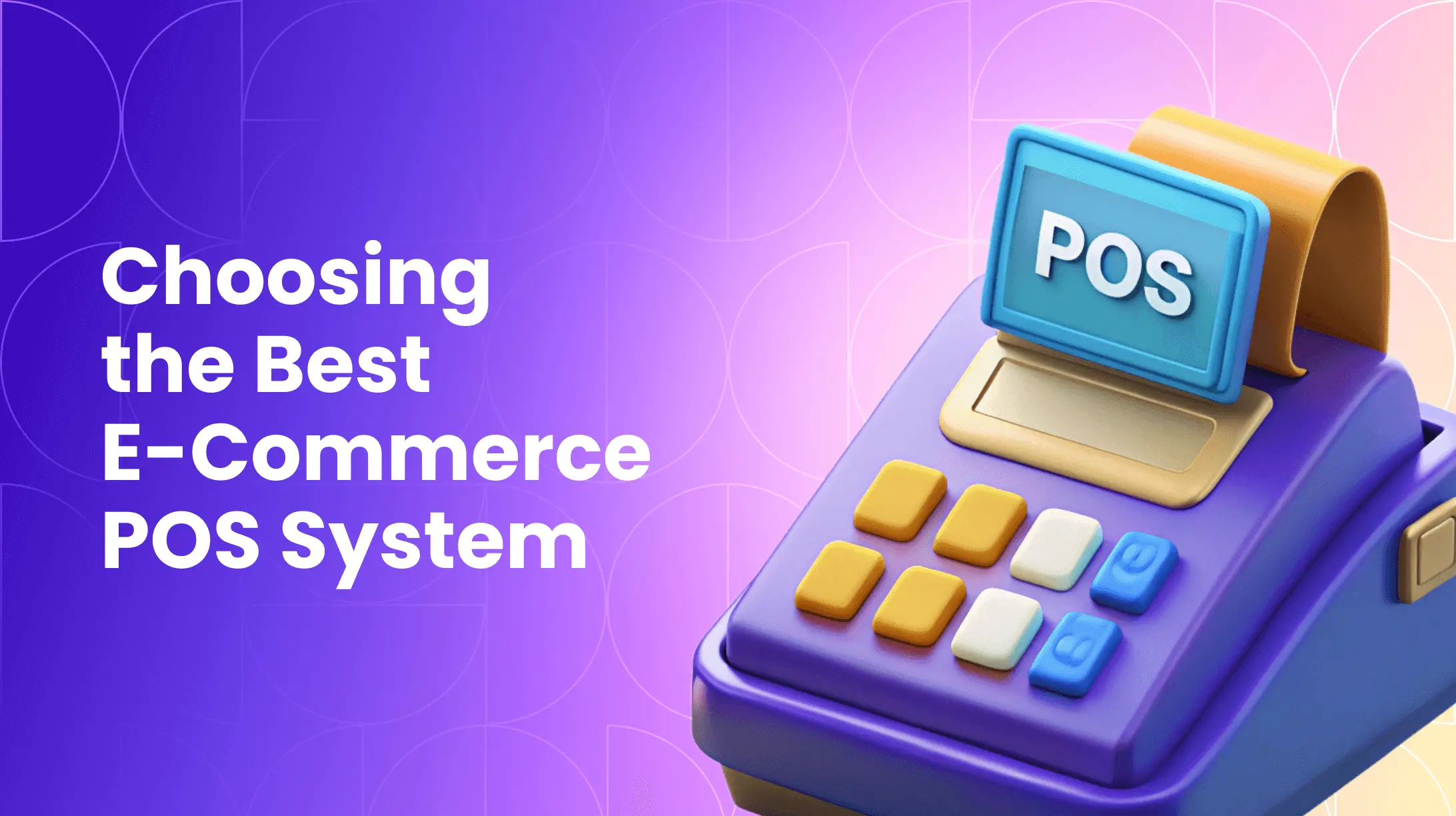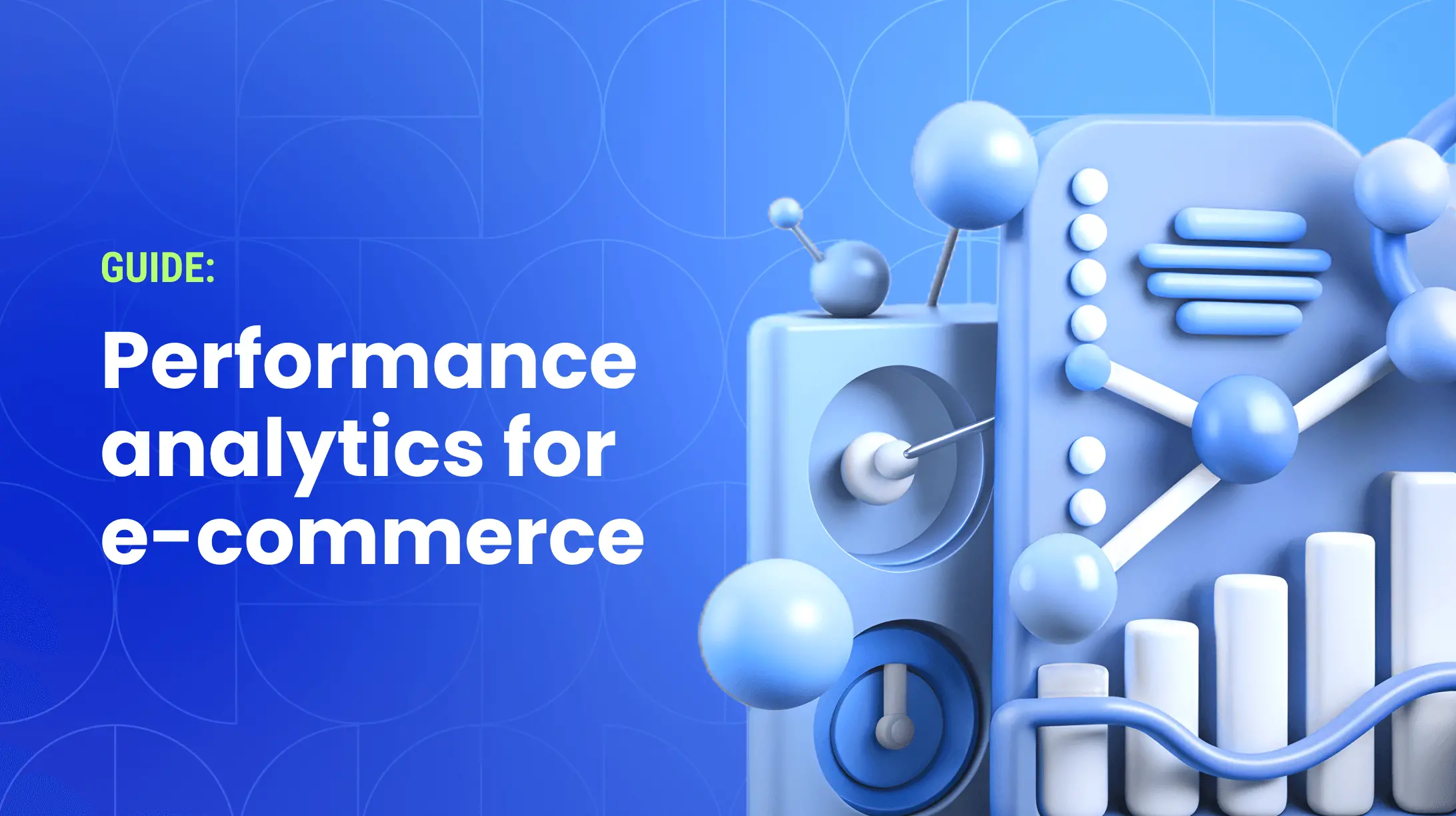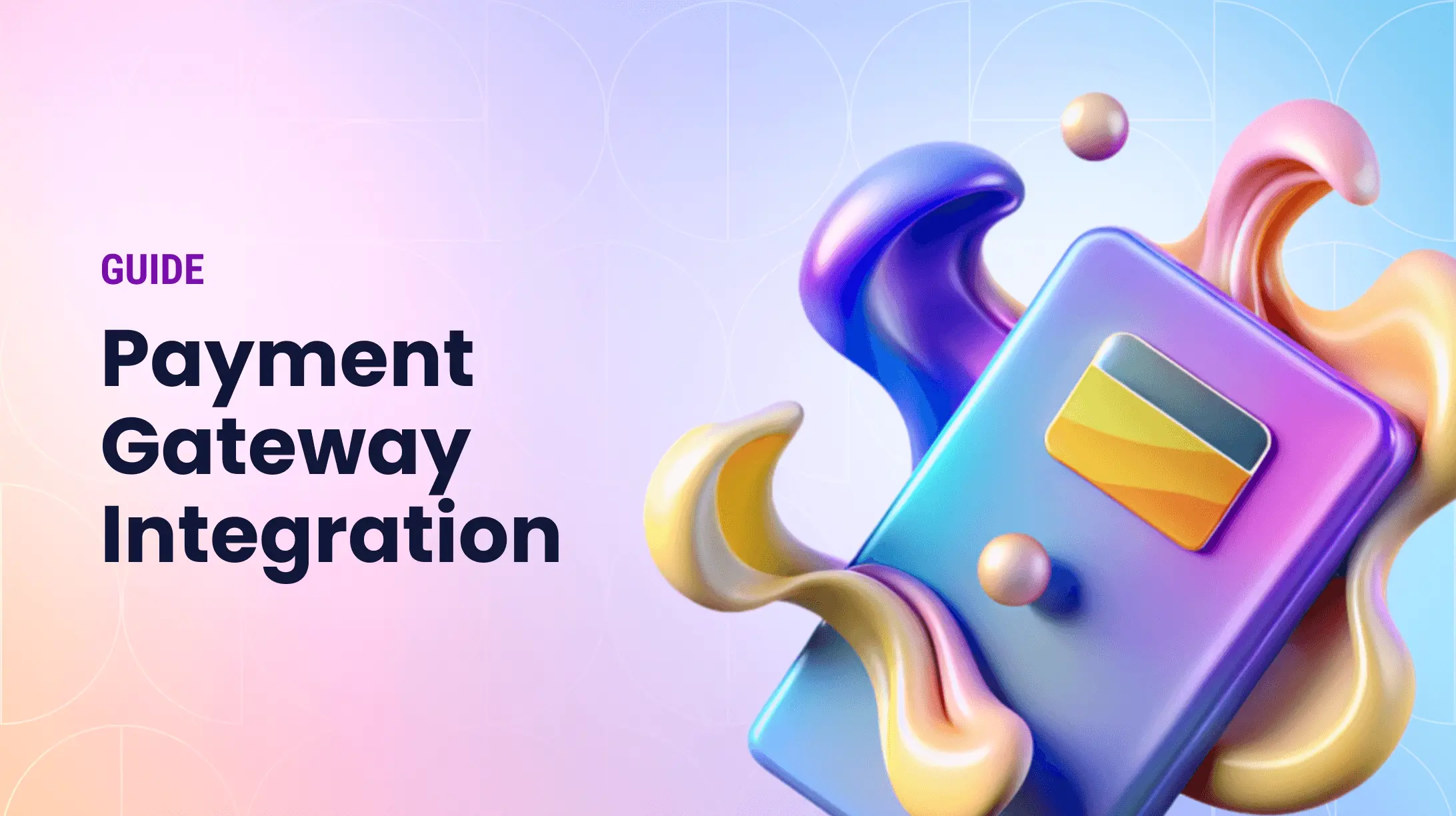0%

In This Article:
What Is an E-commerce POS System?
Core E-commerce POS Features
Advanced Analytics & AI-Driven Insights
How to Choose and Implement an E-commerce POS
Comparing the Best E-Commerce POS Systems
Customizing Point Of Sales Systems for Your Online Store
Advanced Personalization Strategies with Your POS
Integration & Omnichannel Experience
Ongoing POS System Maintenance & Upgrades
Common Point Of Sales Pitfalls and How to Avoid Them
FAQs
Did you know that global e-commerce sales are projected to surpass $8.5 trillion by 2028, with over 21% of all retail sales happening online?
Yet as e-commerce grows, many businesses face issues like fragmented systems, inventory errors, and missed sales, often due to the wrong POS solution. It can hold you back from streamlining operations, delighting customers, and scaling efficiently. So, how do you choose a POS system that truly fits your online store’s needs – today and tomorrow?
This article breaks down the key features, best practices, and expert insights you need to find and implement the best e-commerce POS system for your business.
What Is an E-commerce POS System?
A POS system is software (and sometimes hardware) that handles transactions, processes sales, manages inventory, and records customer data. But not all POS systems are created equal, especially for online retailers.
Unlike traditional retail POS systems that focus on brick-and-mortar checkouts, an e-commerce POS integrates with your online store, unifies sales data across channels, and automates inventory and customer management in real time.
Benefits:
- One dashboard for all your products, orders, and customers
- Brand consistency and better customer experience
- Data-driven decision-making with unified analytics
- Competitive edge through automation and personalization

Core E-commerce POS Features
Before you start comparing POS products, make sure you know which features are truly important for your business.
Seamless E-Commerce Platform Integrations
Modern POS systems should offer out-of-the-box integration with major e-commerce platforms like Shopify, WooCommerce, Magento, BigCommerce, and emerging solutions. Look for API-based connectivity that allows real-time data syncing, no more clunky exports or manual updates.
Multi-Channel Sales
Shoppers discover and buy products everywhere – from your website and popular online marketplaces (Amazon, eBay, Walmart.com), to social channels (TikTok Shop, Instagram Shopping), to brick-and-mortar stores and pop-ups. A unified POS allows you to manage transactions and customer data across all these channels, which ensures a consistent experience and consolidated reporting.
Real-Time Inventory and Order Management
With customers’ high expectations for instant gratification, it’s important to sync stock levels and orders automatically across every channel. Features like automated back-in-stock notifications, low-stock alerts, and location-level inventory views help prevent overselling and keep customers satisfied.
Flexible and Global Payment Gateways
Consumers expect convenient payments, whether online or in-store. The best e-commerce POS systems accept digital wallets (Apple Pay, Google Pay, Samsung Pay), Buy Now, Pay Later solutions (Afterpay, Klarna), cross-border payments, cryptocurrency, and local payment methods such as Alipay and Paytm, ensuring you never miss a sale, no matter where your customers are.
Personalized Customer Data and Engagement
Capture detailed customer profiles, purchase history, and preferences. Use this data to automate targeted email, SMS, and push notification campaigns, offer AI-driven loyalty rewards, enable self-service returns, and deliver personalized product recommendations across all touchpoints.
Advanced Analytics & AI-Driven Insights
Go beyond basic reports. Next-generation POS platforms leverage artificial intelligence to deliver real-time dashboards and predictive analytics, unraveling sales trends, forecasting demand, identifying best-sellers, detecting fraud risk, and analyzing customer lifetime value, helping you make smarter, data-driven decisions.
Omnichannel Fulfillment Options
Today’s systems should support not just shipping but also in-store pickup, curbside pickup, local delivery, and distributed fulfillment from third-party warehouses, giving customers ultimate flexibility.
Robust Security & Compliance
Protect sensitive customer and payment data with advanced encryption, biometric authentication, PCI DSS 4.0 compliance, and regional privacy controls (GDPR, CCPA, and beyond).
Scalability and Automation Tools
Future-ready POS platforms offer workflow automation (such as automatic order routing, restocking, and notifications) as well as scalability that grows with your business, from a single pop-up store to a global operation.
How to Choose and Implement an E-commerce POS
A new POS system can transform your e-commerce operations, but your success relies on careful planning and execution. Follow these best practices to guide your process:
1. Map Your Workflows
First, diagram your order, payment, fulfillment, and refund processes in detail. Pinpoint pain points and inefficiencies. This overview shows exactly where a new POS system creates the most value and helps you target solutions for your business needs.
2. Prioritize Important Features and Vendor Support
Ask stakeholders in every department to name “must-have” requirements and separate them from “nice-to-have” features. When you research POS vendors, read reviews, review case studies, and check the company’s history of customer support and updates. Request a demo or trial and confirm the system works smoothly with your real workflows for both staff and customers.
3. Test Integration and Setup
Follow the POS provider’s integration and setup instructions exactly to sync data between your online store and the POS system. Run thorough tests before going live; check for errors, data mapping issues, and potential downtime to avoid operational disruptions.
4. Prepare Your Team for Change
Prepare clear training guides for staff and appoint a POS “champion” who supports adoption and resolves issues. This approach ensures a smooth transition and helps everyone adapt quickly to the new system.
Get in touch
with our expert
Discuss your project requirements and get a free estimate.
Get in touch
with our expert
Discuss your project requirements and get a free estimate.
Comparing the Best E-Commerce POS Systems
To choose the right POS for your online store, look at pricing, features, integrations, and ease of use. Here’s a side-by-side comparison of top options for e-commerce retailers:
| POS System | Best For | E-Commerce Integrations | Key Features | Pricing | Limitations |
| Shopify POS | Shopify stores | Shopify, Wix, BigCommerce | Native online/offline sync, multi-location, robust reporting, Shopify Payments | Starts at $39/mo | Mostly for Shopify users |
| Square POS | Small businesses, pop-ups | WooCommerce, Wix, Square Online, BigCommerce | Intuitive UI, in-person/online sync, inventory, free plan available | Free / $29–$79/mo | Fewer native e-com features |
| Lightspeed | Multi-store, high inventory | Shopify, WooCommerce, BigCommerce, Magento | Advanced inventory, work order management, deep analytics | From $89/mo | Higher learning curve, cost |
| Clover | Service/retail mix | Shopify, WooCommerce (via 3rd party) | Customizable hardware, app market, loyalty tools | From $49.95/mo | Costly hardware, US-centric |
| Vend by Lightspeed | Growing / multi-channel | Shopify, WooCommerce, BigCommerce | Omnichannel, promotions, flexible integrations | From $69/mo | No built-in payment gateway |
| Toast POS | Food service, restaurants | Online ordering tools | Restaurant/table service, delivery, loyalty programs | From $69/mo | Less suited for physical product e-commerce |
This comparison provides a clear starting point to evaluate market leaders based on your business model, so you can weigh strengths, consider long-term scalability, and make a confident, future-proof choice tailored to your specific goals and requirements.
Customizing Point Of Sales Systems for Your Online Store
A great POS system should adapt to your unique business needs. Customization generally happens on two levels: fine-tuning your daily workflows and expanding functionality through apps or integrations. Let's take a closer look:
Tailor Your Workflows
- Set up automatic syncing for orders, returns, and fulfillment so your inventory and order data stay accurate across all sales channels.
- Create custom flow options such as subscriptions, bundles, digital product sales, memberships, and flexible pre-order setups.
- Implement automated fraud detection to reduce risk, real-time tax calculations for different regions, and currency conversion for global customers.
- Offer guest checkout, upsell or cross-sell during checkout, and set dynamic shipping or payment options based on customer profiles. Configure custom notifications for both staff and customers (e.g., delivery statuses, back-in-stock alerts, or abandoned carts).
Expand Capabilities with Apps and Integrations
- Use third-party apps to suggest products based on customer purchase history, on-site behavior, or AI-driven insights.
- Build flexible loyalty programs, create exclusive promotions, or introduce VIP tiers to reward frequent shoppers.
- Add payment gateways, support local payment wallets, and expand with multi-currency or multi-language plugins as you grow.
- Install extensions for product reviews, advanced analytics, or other specialized needs from your POS provider’s app marketplace.
Advanced Personalization Strategies with Your POS
Modern point of sale e-commerce systems do more than process payments –they give you customer and sales insights to personalize the shopping experience. With the right setup, you can build loyalty, boost order values, and gain a competitive advantage.

Customer Segmentation
With the best e-commerce point of sale solution, you can automatically segment VIPs, at-risk customers, and recent buyers based on real-time purchase behavior. This enables you to tailor messaging and promotions, making each customer feel valued and understood.
Omnichannel Experience
When you use a robust point of sale e-commerce system, you can unify rewards, wish lists, and returns across both your physical and digital channels. Customers enjoy seamless loyalty programs and simplified returns wherever they shop, enhancing their overall experience with your brand.
Measure & Improve
Advanced analytics are a hallmark of the best e-commerce point of sale systems. Use data from your POS to run A/B tests on offers and promo codes, then dive deeper into what works best for each segment. This data-driven approach ensures you’re always optimizing toward higher engagement and better results.
Integration & Omnichannel Experience
Today’s POS and e-commerce solutions should serve as the core hub connecting every aspect of your retail operation, both online and offline. A truly effective point of sale online store setup streamlines processes and delivers a seamless experience.
1. Connect to Marketing & CRM
The best point of sale systems connect seamlessly with marketing and CRM tools, such as Salesforce, QuickBooks, ShipStation, or Mailchimp, linking every sale to your customer data. This integration lets you send abandoned cart emails, reward loyalty, and deliver personalized offers automatically. Each transaction updates your CRM for consistent, effective marketing.
2. Sync with Inventory and Fulfillment
A modern POS and e-commerce system keeps inventory and fulfillment in sync across all channels and locations. Real-time updates prevent overselling and out-of-stocks, while automatic low-stock alerts help you optimize supply. Unified order tracking simplifies management and ensures a better customer experience.
3. Offer BOPIS and Flexible Fulfillment
Top point of sale systems now support BOPIS, curbside pickup, same-day delivery, and endless aisle features. This gives customers flexible shopping options (online or in-store) with easy local pickup or delivery. A centralized POS keeps omnichannel operations smooth and reliable.
4. Unify Data Across All Channels
When you manage multiple sales channels, things can get complicated quickly. An integrated POS and e-commerce system puts all your orders, payments, and inventory in one easy-to-use dashboard. No matter where you sell – online, on marketplaces, social media, or in-store – you’ll have an up-to-date overview that cuts down on manual work, errors, and order confusion.
5. Enhance Customer Experience and Insights
When you connect your online store POS with other business systems, you can recognize customers across every channel, offer consistent loyalty rewards, and deliver personalized support. With unified data, you’ll see which products perform best online or in-store, spot your most loyal customers, and run smarter targeted promotions.
6. Streamline Operations and Scale Faster
When your POS and e-commerce systems work together, your team can collaborate easily and manual tasks drop to a minimum. Expanding into new channels or locations becomes simple. The right POS with strong omnichannel integrations sets your business up for future growth and keeps customers coming back, wherever they shop.
Ongoing POS System Maintenance & Upgrades
Regular maintenance protects your POS system, ensures reliability, and lets your business adapt as it grows. Consistent care also prevents disruptions and allows you to get the best performance from your POS investment.
- Regularly update your POS systems for retail stores, along with all associated plugins or extensions. This prevents security gaps and incompatibilities as different POS systems for retail introduce new features or improvements.
- Whenever you add new features or integrations to your POS systems for retail stores, always test them in a staging environment first. This lets you experiment safely and ensure compatibility across different POS systems for retail before changes go live.
- Keep an eye on indicators like sales lost from sync delays, POS downtime, transaction errors, and slow checkouts. Monitoring these metrics across different POS systems for retail uncovers potential issues before they affect customers.
Routinely back up your sales, inventory, and customer data from all POS systems for retail stores. This protects your business from outages, corruption, or cyberattacks, keeping your operations resilient no matter which POS you use.
Common Point Of Sales Pitfalls and How to Avoid Them
When selecting your point of sale e-commerce solution, steer clear of these common pitfalls that can impact your store’s efficiency and growth:
- No Real-Time Sync – A POS and e-commerce system without real-time syncing can cause inventory errors, overselling, and customer dissatisfaction. Always confirm that online and offline sales update inventory instantly.
- Hidden Plugin Costs – Some point-of-sale online store solutions require extra plugins for key features. Compare not just the base price but also the ongoing costs of essential add-ons.
- Limited Currency Support – If you sell internationally, your POS must handle multiple currencies and taxes. Overlooking this can limit global sales or create accounting headaches.
- Lack of Automation – Forgetting to automate order updates, review requests, or loyalty rewards after checkout is a missed opportunity. Choose the best point of sale system for retail store success that supports seamless post-purchase automation.
- Poor Customer Support – Delays or weak help when issues arise can disrupt your business. Research vendor support quality, hours, and channels before committing.
- Difficult Integrations – Some POS and e-commerce platforms don’t play well with your current tools. Check integration lists and test workflows early to avoid operational silos.
Final Thoughts: How to Choose a Point of Sale System
Choosing the best point of sale e-commerce system is a smart investment in your shop’s efficiency and customer experience. Look for real-time integration, scalability, security, ongoing maintenance, and the ability to custom-integrate seamlessly with your existing tools to set your business up for long-term success.
Take the time to compare different POS systems for retail, prioritize features based on your unique business needs, and test thoroughly before committing. With the right solution in place and seamless custom integration across your systems, your store will be well-equipped to provide smooth shopping experiences on every channel.
FAQs
What is a point of sale in e-commerce?
A point of sale in e-commerce is a digital system that handles online payments, tracks sales, manages inventory, and records transaction data, enabling online stores to process orders efficiently and securely.
How does a POS system work for online stores?
For an online store, a POS system integrates directly with your e-commerce platform. It automatically syncs inventory, processes payments, and compiles sales data, ensuring every aspect of your business stays updated in real time.
What are the four types of POS systems?
The four main types of POS systems include traditional terminal POS used in physical stores, mobile POS solutions operated on smartphones or tablets, cloud-based POS platforms that run online and sync data across locations, and self-service or kiosk POS units where customers complete purchases on their own.
What is a good point of sale system for a small business?
Point of sale systems for small retail business owners, such as Square, Shopify POS, and Lightspeed, offer user-friendly interfaces, affordable plans, and essential sales and inventory features. These solutions provide flexibility for growing online or brick-and-mortar shops without overwhelming complexity.
Who leads the POS service market?
Square, Shopify, and Lightspeed are recognized as leaders in the POS industry, trusted by many retailers for their robust integrations, reliability, and comprehensive support for both online and in-person sales.

Written with the assistance of Sergey Girlya
Adobe Commerce Business Practitioner | Certified PSM & PSPO at TA
Sergey ensures project success by validating business cases, defining success metrics, and identifying sustainable benefits. His proactive approach leverages existing systems, processes, and data to deliver additional value. Serge excels in planning, executing, monitoring, and controlling all aspects of the project lifecycle, ensuring meticulous attention to detail and strategic oversight.
Sergey ensures project success by validating business cases, defining success metrics, and identifying sustainable benefits. His proactive approach leverages existing systems, processes, and data to deliver additional value. Serge excels in planning, executing, monitoring, and controlling all aspects of the project lifecycle, ensuring meticulous attention to detail and strategic oversight.


